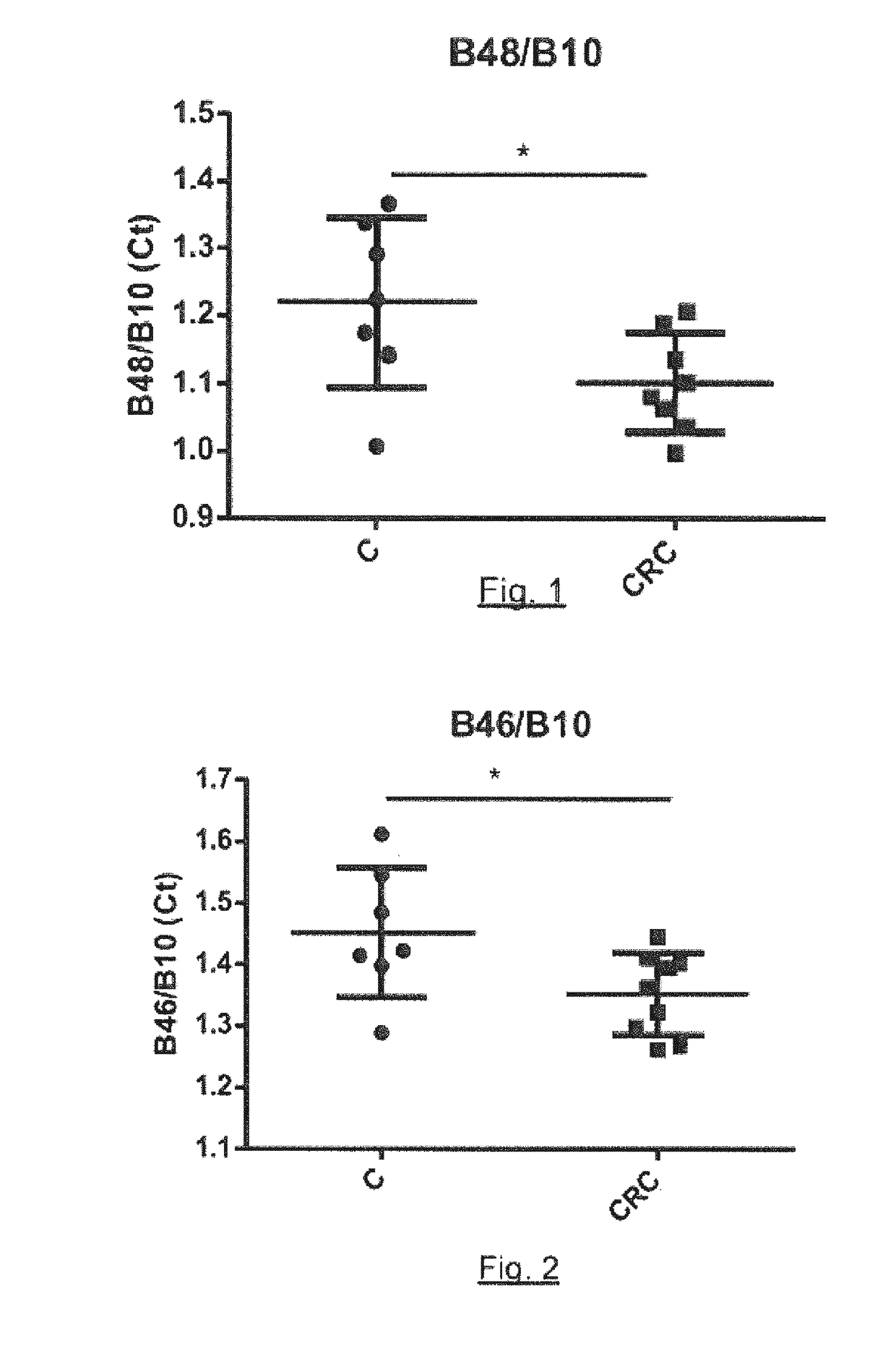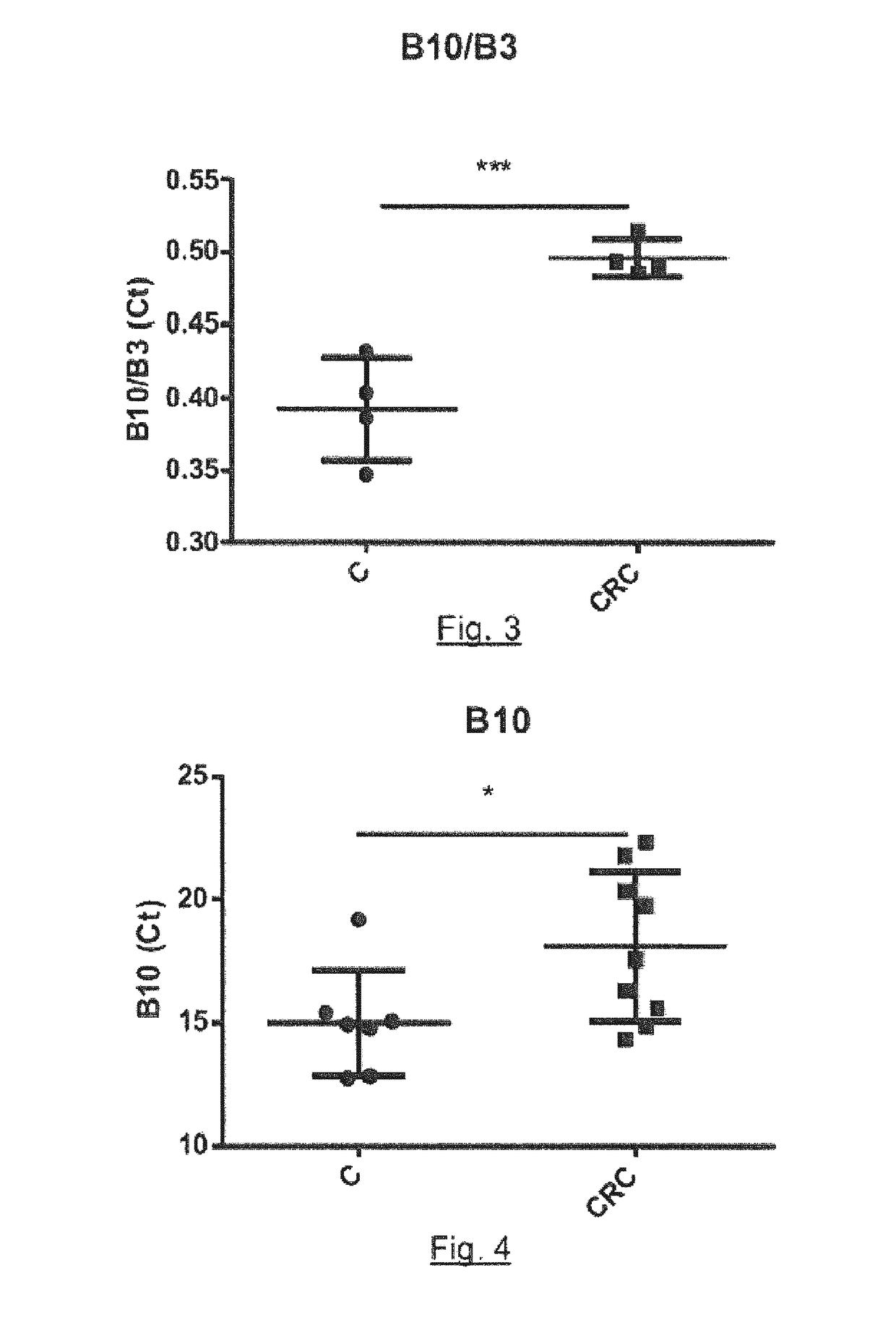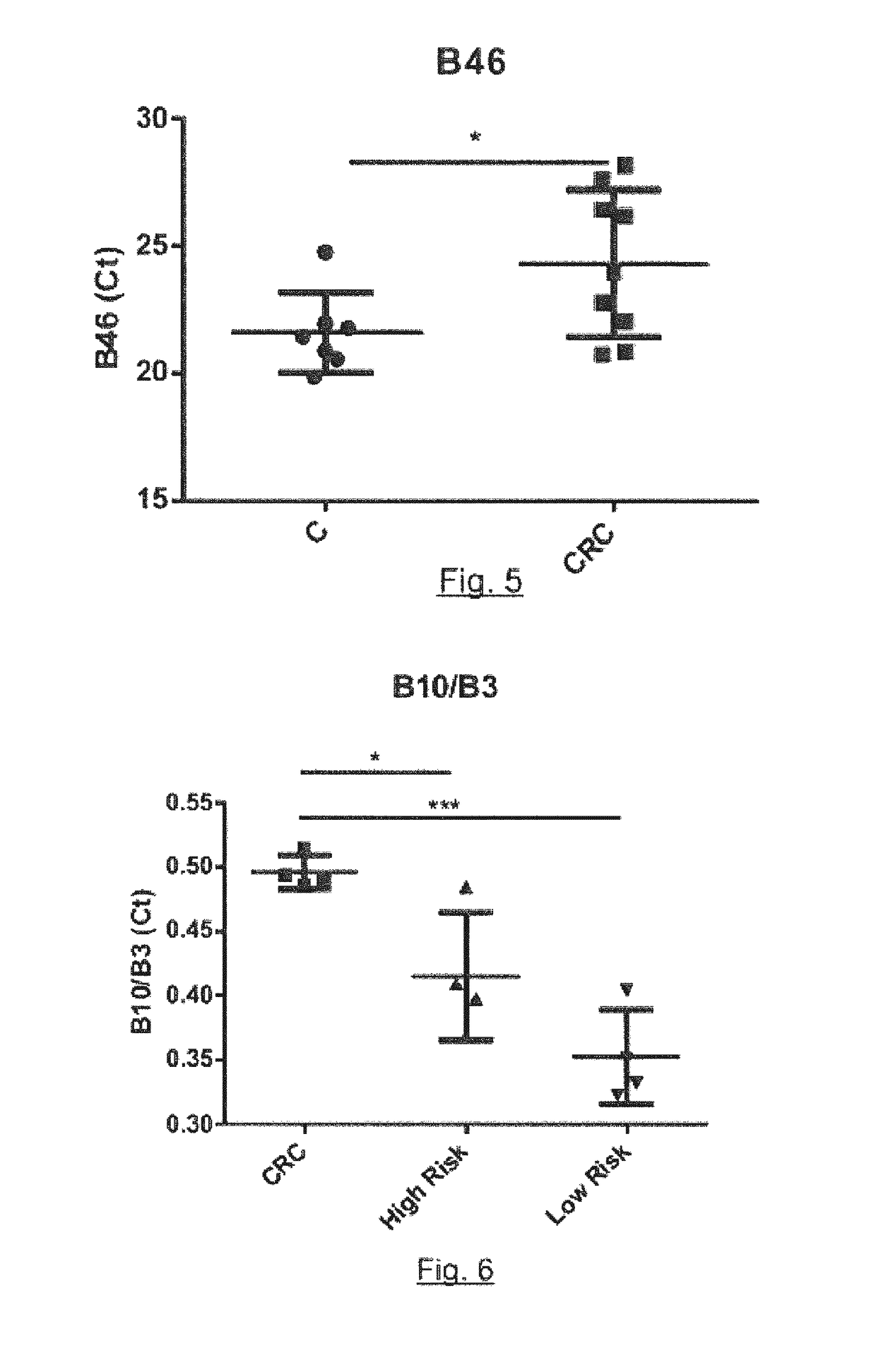Method for diagnosing colorectal cancer from a human feces sample by quantitive pcr, primers and kit
- Summary
- Abstract
- Description
- Claims
- Application Information
AI Technical Summary
Benefits of technology
Problems solved by technology
Method used
Image
Examples
example 1
and Methods
1. Biological Samples
[0170]Fecal samples were obtained from 27 patients recently diagnosed of a colorectal cancer (CRC) (phase 0-I), 24 patients Lynch syndrome carriers (L) and 19 healthy individuals (C). All patients had a colonoscopy at least 15 days before sample collection.
[0171]All of them signed up the corresponding informed consent. Exclusion criteria included antibiotic treatment within the 1 month before the study and age <18 years.
2. 16S rDNA Bacterial Sequences
[0172]B3, B10, B41, B46, B48 and B50 sequences correspond to denaturating gradient gel electrophoresis (DGGE) gel bands previously isolated from uncultured bacterium isolates.[0173]16S rDNA bacterial sequence SEQ ID NO: 1 (B3), published in the EMBL-EBI European Nucleotide Archive (ENA) database under GQ411111.1;[0174]16S rDNA bacterial sequence SEQ ID NO: 4 (B10), published in the EMBL-EBI European Nucleotide Archive (ENA) database under GQ411118.1;[0175]16S rDNA bacterial sequence SEQ ID NO: 7 (B46), pu...
example 2
sign and Validation
[0196]Primer for the quantification of the bacterial markers B3, B10, B46, B48, B41 and B50 in biopsy were designed from the comparative analysis with sequences previously obtained from phylogenetic groups using bioinformatics tools: ClustalX from European Bioinformatics Institute (www.ebi.ac.uk), Netprimer (Premier Biosoft) and PrimerExpress (Life Tecnologies—Thermo Fischer).
[0197]The detection system chosen was SybrGreen®. Set of primers with less than 3 positions different with respect to groups nearby were discarded. Set of primers with Tm values in dissociation curves different of expected ones were also discarded. Primer validation was done in biopsy sample and fecal sample. Dissociation curve was determined in order to analysis primer performance.
[0198]In FIGS. 8a to 13b are shown the amplification plots and dissociation curves for the validation of the designed primers for the amplification of B3, B10, B46, B48, B41 and B50, respectively. Primers showing a...
example 3
16S rDNA Biomarkers Analysis in Colorectal Cancer Patients Vs Healthy Subjects
[0199]A total of 16 samples of feces in 7 controls and 9 colorectal cancer patients have been analyzed. The quantification of each of the bacteria markers cited in Example 1 in feces samples analyzed is expressed in Ct values. The Ct (cyclethreshold) is defined as the number of q-PCR cycles required for the fluorescent signal to cross the threshold. Ct levels are inversely proportional to the logarithm of target nucleic acid concentration in the sample (ie, the lower the Ct level the greater the amount of target nucleic acid in the sample). The real time assays undergo 40 cycles of amplification. The obtained results are shown below, in Tables 1 and 2. Table 1 represents Ct absolute values and Table 2 represents Ct ratios. Two sample t-test was applied.
TABLE 1Ct absolute valuesIDGroupConditionB48B46B10B3F10CRC118.5922.7816.3333.64F11CRC120.3326.4520.3741.57F3CRC123.5226.219.838.45F4CRC116.4120.8714.88F5CRC...
PUM
| Property | Measurement | Unit |
|---|---|---|
| Fraction | aaaaa | aaaaa |
| Electrical conductance | aaaaa | aaaaa |
| Ratio | aaaaa | aaaaa |
Abstract
Description
Claims
Application Information
 Login to View More
Login to View More - R&D
- Intellectual Property
- Life Sciences
- Materials
- Tech Scout
- Unparalleled Data Quality
- Higher Quality Content
- 60% Fewer Hallucinations
Browse by: Latest US Patents, China's latest patents, Technical Efficacy Thesaurus, Application Domain, Technology Topic, Popular Technical Reports.
© 2025 PatSnap. All rights reserved.Legal|Privacy policy|Modern Slavery Act Transparency Statement|Sitemap|About US| Contact US: help@patsnap.com



